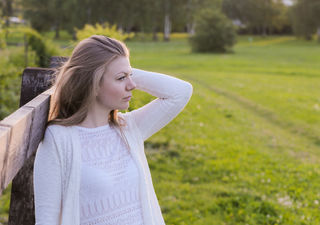Anxiety
The Anxiety-Busting Properties of Ritual
How ritualized actions act as a natural anxiolytic.
Posted September 25, 2017 Reviewed by Devon Frye

Life is full of uncertainty. We experience the vast complexity of our world as “one great blooming, buzzing confusion” (James, 1890).
We know all too well how this buzzing confusion can make us feel. But life’s uncertainty takes on a new meaning the moment we peer inside the inner workings of the brain. For all its myriad complex functions, it’s generally agreed upon in neuroscience research that the brain’s chief job is the following—to draw predictions about the future, and to orient behavior in line with those predictions.
The brain does so by gathering as much information as possible and then using the data as inputs into the predictor system. The problem is, the brain isn’t able to get all the information it needs to make accurate predictions. As a result, it experiences countless sources of uncertainty. When this happens, systems in the brain fire off warnings called “prediction error signals.” Of course, this is all going on behind the scenes. The real show, and what really matters for us, is the feeling that these signals give way to the blooming, buzzing confusion of anxious uncertainty.
We can think of it like this: A brain that can predict (one that is certain) makes a human feel safe and happy. A brain that cannot predict (one that is uncertain) makes a human feel threatened and anxious.
Beneath this explanation is a scary thought: The brain simply cannot predict everything, because it is impossible to gather all the information it needs all of the time. Taking a neuroscience view reaffirms the self-evident truth that kicked off this post: Uncertainty and anxiety are inevitable.
A Positive Twist: The Ritual Shield
Luckily, we humans have figured out ways to deal with this anxiety and optimize our behavior. Over eons of adapted change, we’ve evolved a suite of behavioral and cognitive responses that help quell the inevitability of life's uncertainties.
Rituals seem to be particularly good in this regard. Scholars have long known about the anxiolytic properties of rituals. They bring order and structure to a world that is inherently disordered and chaotic. Rituals are an effective shield that protect us from the onslaught of uncertain events. But how exactly does this work? What is the magic of rituals? The quick answer is less about magic and more about science.
The Science of Ritual’s Anxiety-Busting Properties
The science and psychology of rituals, a new area of research that my colleagues and I have been diving into, offer compelling explanations for how rituals work when it comes to combating uncertainty and anxiety.
We have argued that rituals’ anxiety-busting features reside in their basic physical structure. The defining features of rituals, repetitive and rigid movements, buffer against uncertainty by evoking a sense of personal control and orderliness. The very act of engaging in a scripted sequence of ritualistic movements tricks the brain into thinking that it’s experiencing the pleasant state of predictability and stability.
The crux of the argument says that in times when uncertainty is beyond our control, the brain will subconsciously lead us to engage in ritualized movements as a compensatory mechanism to bring about a sense of personal control. This, the argument goes, is the starting point for all of life’s little (and big) rituals.
A Nifty Experiment: Motion-Capture Technology
A team of my colleagues took this argument into the lab to see if it held any water. They devised an experiment in which people were assigned to either a high anxiety/uncertainty or low anxiety/uncertainty condition. The high-anxiety subjects were told they had to present on an unfamiliar art topic to an unforgiving and angry panel of judges. The presentation, they were told, would be on a piece of sculpture, which they had to hold onto while presenting.
Why the sculpture? The researchers wanted to see how the highly anxious physically interacted with it during the presentation. Herein lay the experimental test: The researchers predicted that high-anxiety individuals would physically handle the sculpture in a more ritualized manner (presumably as an unconscious tactic to reduce their source of anxiety from the presentation-related uncertainty). They would show patterns of hand/arm movements involving more repetitiveness and rigidity.
Science is all about observing and quantifying. So how did the researchers quantify ritualized movements in the face of heightened anxiety? Here’s the nifty part: People’s movements were inadvertently recorded while handling the sculpture. They were fitted with a pair of wristbands that had built-in motion capture technology. The wristbands recorded every slight hand/arm movement, turning each into a data point for subsequent analysis.
The results were in line with the researchers’ predictions. The high-anxiety participants elicited greater ritualized movements, and increased repetitiveness and rigidity, while they presented to the angry judges. These findings confirm that the brain responds to anxious uncertainty by spontaneously generating movements that imbue a sense of personal control and order. Going back to our argument, the brain does this as an evolved response to help a person deal with uncertainties that are beyond his or her control.
Implications and Recommendations
The study has many important implications. These “ritualized” movements that help rid us of anxiety are the building blocks of the full-blown rituals we see in daily life. Take a look, for instance, at some of our most cherished cultural and religious rituals. You’ll notice just how much repetition and scripted rigidity are built into them. This isn’t happenstance; these behaviors fulfill a fundamental psychological need. They give us a sense of structure when all structure is lost. They convince the brain that things in our world are predictable, ordered, and safe.
What are your anxiety-busting rituals? Ask yourself which of your day-to-day behaviors are helping you navigate the roads of uncertainty. Of those that you already do, consider making them more formal, committing to them with greater intention and personal resolve. Or perhaps you could stand to have more rituals in your life, in which case I would recommend creating your very own. Our research shows that even ad-hoc ritualized behaviors created from scratch begin to take on personal meaning for people in as little as four days.
Imagine, then, the benefits of doing your own set of such practices for weeks, months, or even years. Here’s a bonus: The certainty that rituals create through their basic structure gets compounded over time. The more we do them, the more meaningful they become, both to us and to others with whom we might share them. And meaning, as everyone can attest to, is a powerful psychological force that can respond to almost any source of uncertainty and anxiety.
We can all agree that life is full of uncertainty. But the blooming, buzzing confusion of our world stands little chance against the power of rituals.
LinkedIn image: Syda Productions/Shutterstock
References
Lang, M., Kratky, J., Shaver, J. H., Jerotijevic, D., & Xygalatas, D. (2015). Effects of anxiety on spontaneous ritualized behavior. Current Biology, 25, 1892-1897.




